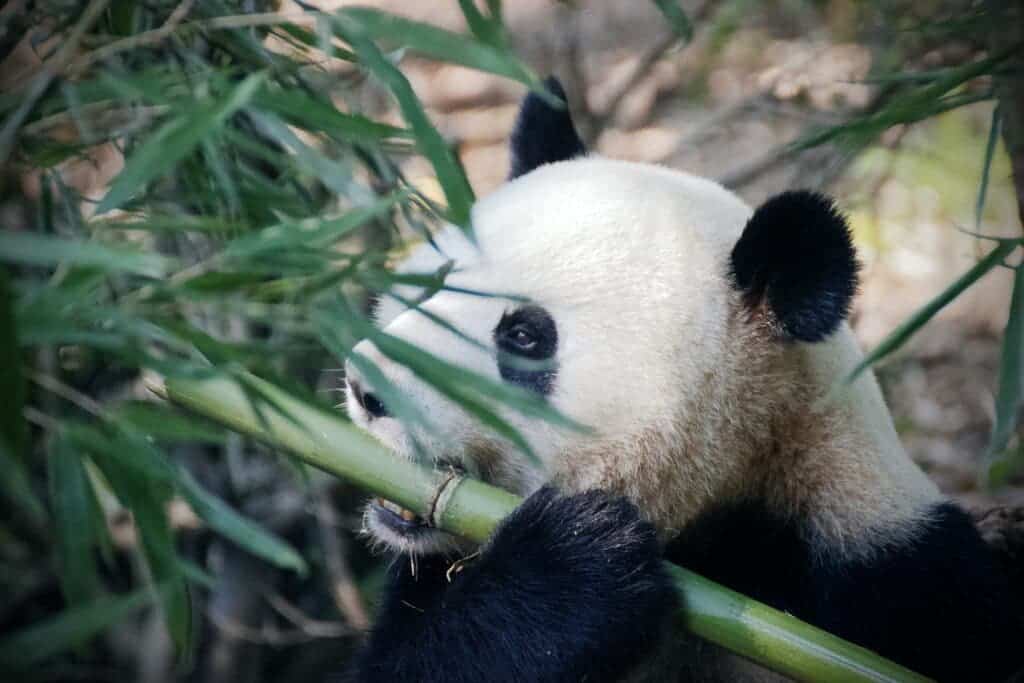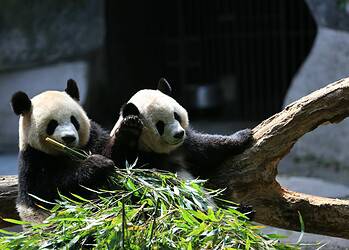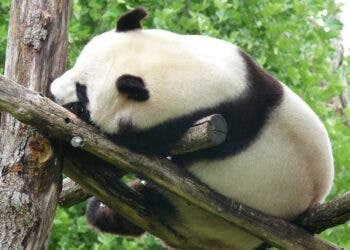
Although pandas subsist almost entirely on bamboo, plants with very little nutritional value, they are all on the chubby side. While it’s true that the rare mammals compensate for the poor calorie content by eating up to 80 pounds of bamboo per day, a new study has revealed that symbiotic gut bacteria also play a crucial role in fattening pandas and preparing them for when only bamboo leaves are available to chew on.
Like other bears, giant pandas possess the digestive system of a carnivore, but they have evolved to depend almost entirely on various bamboo species. For most of the year, pandas feed on fibrous bamboo leaves, but during the shoot-eating season in late spring and early summer, they get to enjoy newly sprouted bamboo shoots that are rich in protein. It’s no coincidence that during this season they’re also at their chubbiest.
Researchers led by Fuwen Wei at the Institute of Zoology have been studying wild giant pandas living in the Qinling Mountains in central China for decades. Their research showed that the animals have a much higher level of a bacterium called Clostridium butyricum in their gut during the shoot-eating season compared with during the leaf-eating season.
That’s quite common since many animals experience a seasonal shift in their microbiota as a result of changes in the availability of food. For instance, some monkeys have different gut bacteria in the summer when they eat fresh leaves and fruit compared to the winter, when they mainly feed on tree bark. Humans are no exception — Hazda people, one of the last hunter-gatherer communities left in the world, experience similar shifts in their gut bacteria as the available food changes throughout the year.
In order to investigate whether the Clostridium butyricum was having any effect on the pandas’ metabolism, the researchers performed fecal transplants of panda poop collected from the wild to germ-free mice. The mice were then fed a bamboo-based diet that mimicked what the pandas normally eat for three weeks.
“For endangered and vulnerable wild animals, we can’t really run tests on them directly. Our research created a mouse model for future fecal transplant experiments that can help study wild animals’ gut microbiota,” said first author Guangping Huang, from the Institute of Zoology at the Chinese Academy of Sciences.
The rodents transplanted with the panda feces from the shoot-eating season gained significantly more weight and had more fat than mice transplanted with feces from the leaf-eating season. Both groups of mice consumed the same amount of food, which means the bacteria must be doing something to help the animals gain weight.
On closer inspection, the researchers in China found that a metabolic product of C. butyricum, butyrate, upregulates the expression of a circadian rhythm gene called Per2, which increases lipid synthesis and storage.
“This is the first time we established a causal relationship between a panda’s gut microbiota and its phenotype,” said Huang. “We’ve known these pandas have a different set of gut microbiota during the shoot-eating season for a long time, and it’s very obvious that they are chubbier during this time of the year.”
Identifying which microorganisms in the panda’s gut play crucial roles in their health is highly important for conservation. There are only a few thousands giant pandas left in the wild, and captured pandas need to be fed the right diet to prepare them for rewilding. The research may also benefit humans, as many diseases that afflict us can be treated with probiotics.
The findings appeared in the journal Cell Reports.






